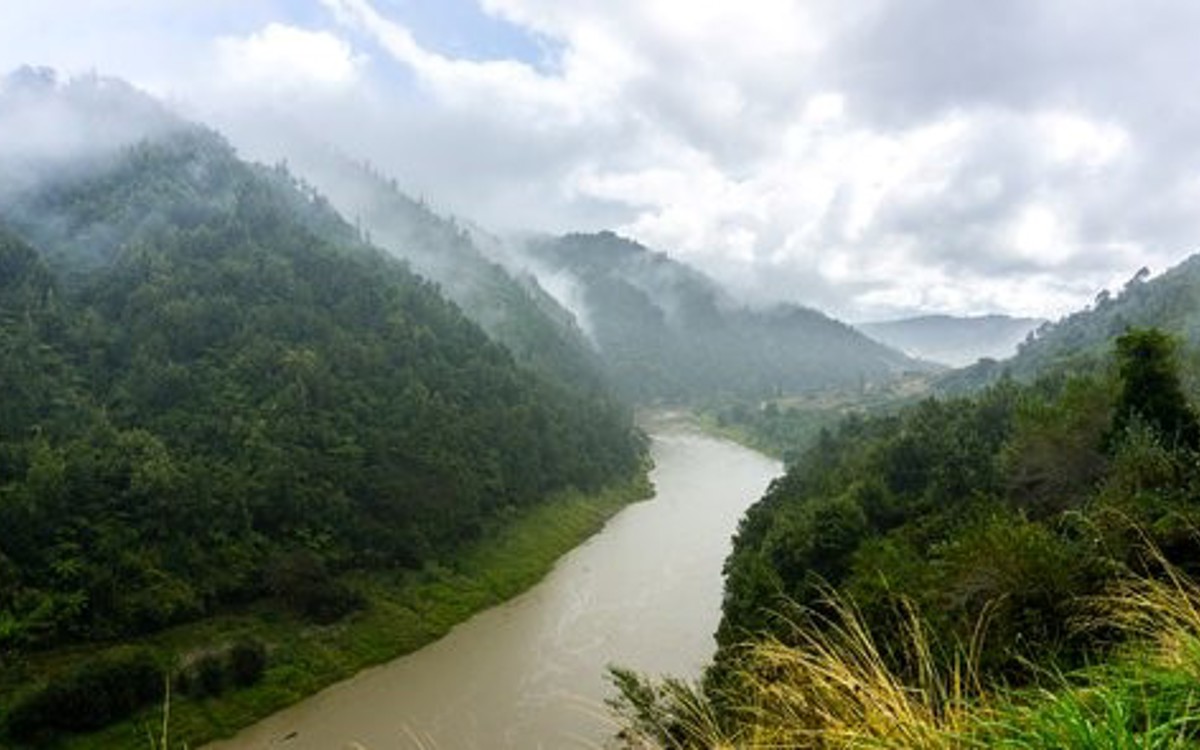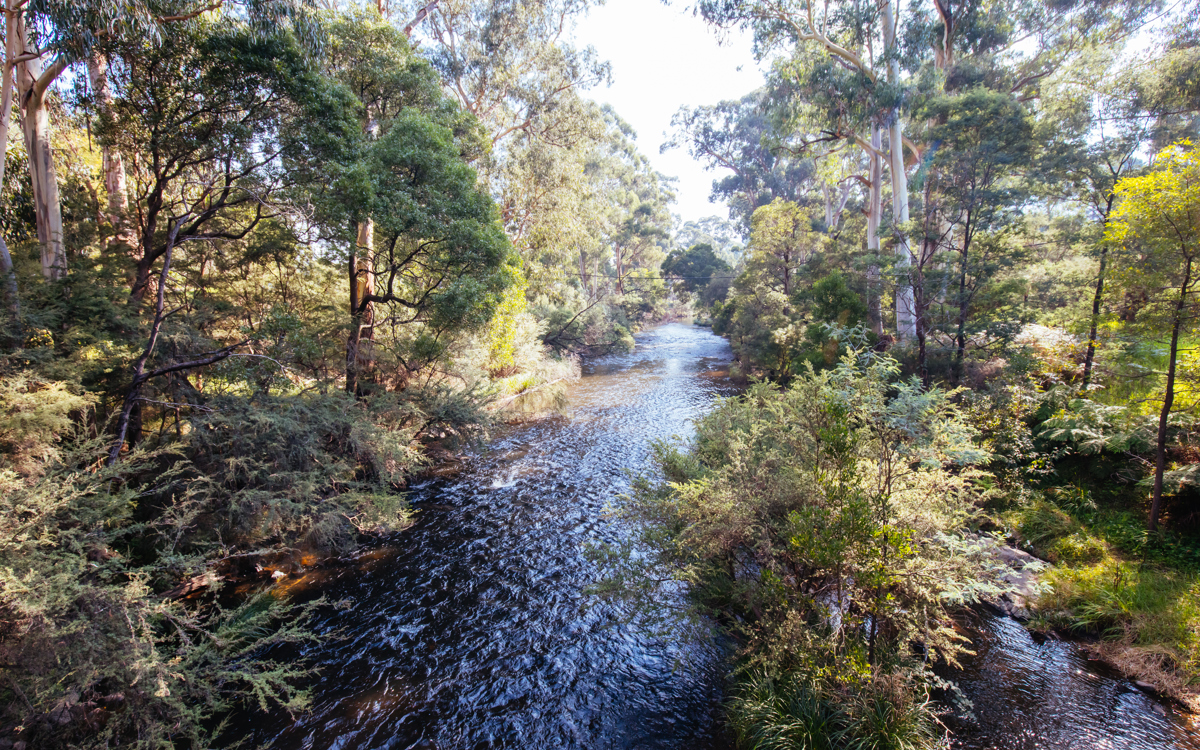Some of the world’s most beloved rivers are now recognised in law as living beings, but does this help to protect them?
By Erin O’Donnell, University of Melbourne, Australia

The Birrarung rises on the slopes of Mount Baw Baw in Australia’s Great Dividing Range. For 150 miles, it winds its way westwards – twisting through forested valleys, open plains, and dense urban sprawl – before flowing out to sea at Melbourne’s Port Phillip Bay. Known to most as the Yarra, its waters mean many things to many people. But in recent years the law has recognised something that its Traditional Owners, the Wurundjeri people, have always known: the Birrarung – their sacred river of mists and shadows – is a living being.
The Birrarung/Yarra was the first Australian river to be recognised in law as a living, integrated entity from its mountain source to the sea. It is one of a growing number of rivers and lakes around the world to have gained legal status – either as living beings or, in some cases, legal persons. This new legal status makes a powerful statement about what – and who – matters to the law. Some of the world’s most beloved rivers now have powers, duties, and rights – the right to sue (and be sued), to enter into contracts, and to own property. But could these legal powers also have unintended consequences for these new river beings?
There is certainly an evocative symbolism to the rights of rivers that captures the imagination. It implies a profound cultural shift – away from the notion of nature as a warehouse of commodities, towards a concept of a natural world inhabited by living entities with their own needs, rights, and intrinsic value. But this is by no means a new idea. The recognition of rivers as living beings is often grounded in the laws and cultures of Indigenous peoples, which emphasise respectful relationships with nature and the deep cultural and spiritual ties between people and place.
This is in marked contrast to Western or settler colonial laws, which historically have relegated natural entities to the status of ‘other’: legal objects under the dominion of – and separate to – humans. Rather than recognise that nature and humans are interconnected, these laws assume that we can isolate and control elements of the natural world as we choose.

This rigid separation between nature and humanity is inherently colonialist: it is no coincidence that the legal rights of rivers have gained particular prominence in countries once under colonial rule – Australia, Bangladesh, Canada, India, and New Zealand among them. Settler colonial law erased the role of Indigenous peoples as custodians of their land and waters, and the way in which their actions have sustained biodiversity for tens of thousands of years.
Recognising rivers as living, ancestral beings may start to redress this injustice, as well as protecting rivers from ongoing assault. Indeed, it is thanks to the long leadership of Indigenous peoples that rivers (and the people who know them best) are finally getting a voice in decisions about their future.
But if legal rights are to bring real and lasting justice to rivers and to people, we need to think carefully about the kind of legal model that will give us the outcomes we want. And that’s where it gets tricky.
Friend or foe?
One of the paradoxes of legal rights for nature is that emphasising legal status, especially at the expense of all else, can actually end up fracturing the relationship between people and the natural world.
When nature gets rights of its own, people may become complacent. They may assume that a river with rights can fend for itself and no longer needs their protection. In this way, legal rights can allow society to abdicate its responsibilities to protect the environment, relying instead on nature to look after its own interests.
Legal personhood can also frame the river as an adversary or rival for resources. When this happens, our willingness to protect it may be eroded and replaced by a transactional or competitive relationship in which there are winners and losers. Humans and rivers can become locked in a struggle, their reciprocal relationship obscured by the conflict.
Some river beings have already faced such a backlash. In Uttarakhand in India, where the Ganges and Yamuna rivers were granted the same legal rights as humans, the nominated river guardians in the state government promptly appealed the decision for fear of being held liable if the rivers flooded. In Bangladesh, where all rivers have legal rights, this has resulted in fears of eviction for the low-income communities who live and work along them, pitting the rights of rivers against the rights of humans.
And then there’s the question of whether legal rights might actually reinforce notions of human dominance over nature. For people with a close connection to a river, it is often already a tangible, integrated, complex, spectacular, and precious living thing. Traditional Owners, in particular, consider the river already to be a living entity and should not have to depend on settler law to bestow this status upon it.

The pitfalls of personhood
A legal person in law is not necessarily the same as a human person. Its defining characteristic is its capacity to bear rights and duties. Yet the concept of ‘personhood’ also speaks to the idea of a being – human or otherwise – with moral significance. This, perhaps, is one of the reasons why the recognition of rivers has such resonance.
But when the lines between legal person and human person become blurred, things can get uncomfortable. In India, a police report was filed for the apparent murder of the Yamuna River, which an activist claimed was ‘ecologically dead’. His police report named a series of government officials he wanted charged with attempted poisoning, arguing that: ‘If the river is dead, someone has to be responsible for killing it’.
While the death of a river sounds metaphorical, it has historically been recognised by science. In 1957, the River Thames in England was famously declared ‘biologically dead’ by scientists at the National History Museum in response to extreme levels of pollution and loss of aquatic life – although thankfully its resurrection would come later. Today, the River Senne in Belgium is similarly acknowledged as ‘dead’, but plans are afoot to reduce pollution and restore it to life.

This blurring of lines between legal, living, and literal reminds us that the recognition of nature as legal subjects is often the result of Western legal frameworks adopting and translating concepts from the laws of Indigenous peoples. Without deep, respectful engagement, such translations can involve a reinterpretation (or appropriation) of these laws that may actually undermine the rights of Indigenous peoples or require them to adopt legal positions that are at odds with their worldviews.
The right to flow
For most of us, the essence of a river is its waters. What is a river without water, after all? Yet the same legal frameworks which seek to give rivers their rights still deny them the right to control their own lifeblood: the water which flows between their banks.
That rivers are still denied the right to flow is perhaps the most troubling issue in the rights for rivers movement and there are growing efforts to address this. When Canada’s Muteshekau/Magpie River became a legal person in 2021, its nine rights included the right to flow.
But how to enforce the right to flow is less clear and therein lies the tension at the very heart of the rights of nature movement: if something cannot be enforced by law, then we cannot rely on the law to protect it when conflict arises. This is often the true test of the law’s power to protect its subjects.
A place of mists and shadows
So, are increased legal powers the answer? Not necessarily. As we’ve seen, a focus on legal rights to the exclusion of all else can actually be counterproductive. But what happens when we take a different approach?
Let’s return here to the Birrarung – that river of mists and shadows. The Birrarung is recognised as a living entity, rather than a living person. On the face of it, this is a weaker legal position: the Birrarung does not have the power to take legal action against those who would injure it. But this more ‘gentle’ status also helps the Birrarung to avoid some of the downsides of legal personhood, while still creating a cultural shift in the way people approach it.
The Yarra River Protection (Wilip-gin Birrarung Murron) Act is a specific, place-based piece of legislation that centres and celebrates the diversity of the people who love the river. As well as being the first Australian act of parliament to recognise a river and its lands as a living and integrated entity, it was the first to be co-titled in the language of the Traditional Owners, the Wurundjeri Woi wurrung people – Wilip-gin Birrarung Murron translates as ‘Keep the Birrarung alive’.
The Birrarung Act explicitly acknowledges the millennia-long relationship between the river and the Wurundjeri Woi wurrung people, the Traditional Owners of the land through which it flows. In learning from Wurundjeri Woi wurrung laws and values, the Act created new space within settler-colonial law to acknowledge the relationship between the river and all people who live along it. Along with recognition in law, the Birrarung has been given a voice through the Birrarung Council – a bi-cultural committee which includes three Wurundjeri Woi wurrung Elders among its members.
Without the right to take legal action, the Birrarung’s living status is largely symbolic. Yet this symbolism is not without transformative potential. Legal recognition of the river as a holistic entity increases its status from that of a mere object and can bring about a significant shift in the language and focus of river management. It requires the law to view the river as a whole, rather than a set of separate elements under different jurisdictions. Most importantly perhaps, it emphasises the relationship between people and the river, requiring us to work together, with the river, as partners in our collective futures.

The ebb and flow
The goal of giving legal rights to rivers, then, should not simply be that they can go to court, but something more far-reaching and profound: to reset and reframe the human relationship with nature. The true power of legal status lies in its ability to transform how we relate to rivers. When we start to see a river as a living being, we begin to think very differently about how we act towards it, and this can be the start of meaningful change.
Achieving this more respectful and reciprocal dynamic requires an approach grounded in legal pluralism, in which the laws and values of Indigenous peoples are recognised and understood. River management to date has largely excluded the rights and interests of Indigenous peoples, and this continues to be the case across the world. The most successful examples of legal rights for rivers are those that aim not only to protect the ecology of the river, but also strengthen the relationship between people and place.
Despite the challenges and complexities, the world’s newly empowered rivers are a cause for hope. Changes in the law can help to change the way we think, as well as act, and can make a powerful statement about what and who matters to society. In an increasingly competitive and degraded world, legal rights may offer a new way to protect nature where existing environmental laws have failed. We owe it to the rivers – and ourselves – to try.
Dr Erin O’Donnell is an Early Career Academic Fellow at Melbourne Law School, University of Melbourne, Australia, and a member of the Birrarung Council.
The author and editors acknowledge the Traditional Owners of the lands and waters featured in this article and pay our respects to their Elders past and present.
Images: main illustration by Shivani Shenoy, courtesy of Current Conservation. Photographs (from top) by rumboalla at iStock, duncan1890 at iStock, and FiledIMAGE at iStock
